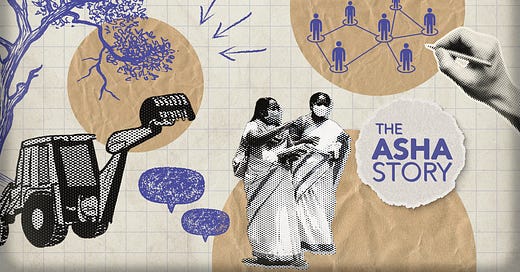We’re Taking the Historical Route With News Stories. Here’s Why
In Postscript, we reflect on the editorial choices we make and abandon. Plus all things behind the scenes
India’s forests, both urban and non-urban, are in danger. The people who live within them, Adivasis and other forest dwellers, even more so. This is a loss of their home, memory, ancestry, spirit and their economy. In May alone, three instances of evictions and violence came to everyone’s notice. The Jenu Juruba group were marching to reclaim their forests in Karnataka’s Nagarhole; the Van Gujjars were living in fear under the shadow of state repression in Uttarakhand’s Jim Corbett National Park; and Adivasis came to confrontation with the district authorities even as their legitimate claims to titles were rejected in Madhya Pradesh’s Burhanpur. We had also been following the Indian forest story, through its many strands, for a long while – documenting, from Mumbai’s Aarey and Thane’s Chirag Nagar to Chhattisgarh’s Bastar, the fights waged by women and Adivasi communities.
We asked ourselves: Why was this happening when forests were governed by a historic, progressive, rights-based framework – the Forests Rights Act? The legislation was enacted to right the historical wrongs and place power back within the hands of the forest dwelling communities. Where did things go wrong?
At BehanBox, we have been taking a longue durée approach to our critical stories, understanding the historical underpinnings to explain current moments. We believe this exercise in context setting is necessary, not just for us as reporters and editors, but also our responsibility to our readers. We need to connect the dots and explain the continuities and disruptions within our structures, laws, and policies, to understand how the government places citizens in its imagination.
So after numerous ground reports on land grabs, resource extraction, evictions and displacement, we dug deeper into India’s history of forest governance from colonial to the modern times. We discovered knots of contradictions – between the forest and tribal affairs departments, colonial extractive idea of forest conservation and the community driven one, and India’s older forest acts vs the more recent Forest Rights Act. This explained the tension between the state and its people – the Adivasi communities and forest dwellers. It also enabled an oppressive regime where evictions were rising, state violence was becoming disproportionate, and the nexus of corporate greed and big infrastructure was claiming the lands that were once sacred.
It is an approach that has helped us understand not just the evolution of laws but the philosophy of governance, the forces that shaped it over time, and the impact on communities. We applied the same thinking to make sense of India’s Time Use Surveys, domestic workers legislation or the lack thereof, and Delhi’s unique governance models. We have also observed a pattern where we see older conservative laws trumping over the new progressive ones, in practice. It is a strand we hope to observe more keenly and deeply in our future stories.
Read our story on why India’s forest governance fails Adivasi and forest-dwelling communities here.
What’s Coming
ASHA Workers’ Stories: In March, we announced ‘The ASHA story’, an ambitious public archive for celebrating and commemorating India’s 1 million strong community workers. It is our labour of love. As part of that project, we have been conducting extensive interviews with ASHA workers tracing their journeys and personal histories, as part of building a ground up oral history archive. These histories are at once a history of India’s public health system as well as the care economy. They are a goldmine – each interview leaves us emotional as well as insightful. We don’t want to hold them back until the entire archive is unveiled, so starting this July, we will publish personal narratives of ASHA workers, covering their histories across geographies and social identities. We hope you can take delight in their lives as much as we do.
Debt Chronicles: We wrote to you on our upcoming series on debt and its very gendered nature, in our last newsletter. While we continue to work on extensively reported stories, we’re bringing to you ‘Debt Chronicles’, a collection of personal stories of women across class, caste, gender diversity, region, and ecological geographies. It felt necessary to give this a human face that brings out the various strands – visible and invisible, technical and affective, social and psychological – of the complicated idea of debt. We had earlier used this approach to understand the gendered nature of inflation through our Inflation Journals. Stay tuned for more.
Counting Caste: All eyes are on the government’s inexplicable delay in conducting the decennial census, but another exercise that is garnering equal anticipation, if not more, is the caste census. India will be counting caste for the first time since 1931. We will bring you a comprehensive history of thought, politics and practice of India’s endeavours with caste enumeration with historian Trina Vithayathil.
That’s all for this month’s Postscript, Behans. Our eyes, ears, hearts, and inboxes are always open for your thoughts. Write to us or comment below.







